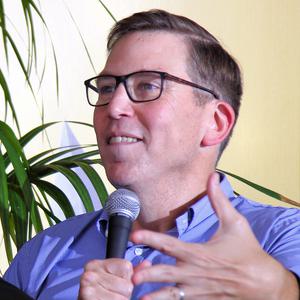A recent article in Time Magazine by Editor-at-large David Von Drehle examines the current state of the death penalty in the United States at a time when the Supreme Court is considering the constitutionality of the most widely used method of execution – lethal injection. Von Drehle writes, “In a perfect world, perhaps, the government wouldn’t wait 30 years and several hundred executions to determine whether an execution method makes sense. But the world of capital punishment has never been that sort of place. This weighty moral issue, expressive of some of our society’s deeply held values, involves a lot of winging it.”
Von Drehle says that the death penalty debate often comes down to the question of whether to “fix it or end it.” But that debate, he says, misses the reality. “One government budget contains millions of dollars for prosecutions, while another department spends more millions to defend against them. Indeed, the very essence of ambiguity is our vain search for a bloodless, odorless, motionless, painless, foolproof mode of killing healthy people.”
He compares the death penalty to a “Rube Goldberg machine” that we are constantly tinkering with:
Supreme Court Justice Harry Blackmun aptly described this endless activity as “tinker[ing] with the machinery of death.” He spoke as a veteran tinkerer, having helped cook up an abstruse set of requirements for calculating the aggravating and mitigating factors in a prisoner’s life and crimes – a concept that continues to bog down juries and judges a generation later. Other veterans of the Supreme Court’s long struggle with capital punishment have also soured on the experiment. Justice Lewis Powell told a biographer that the vote he most regretted was the one he cast in 1987 to save capital punishment. Another member of the five-Justice majority in that case, Sandra Day O’Connor, told a group of Minnesotans not long ago that they should “breathe a big sigh of relief every day” that their state doesn’t have the death penalty. Justice John Paul Stevens, who as a new Justice in 1976 voted to restore capital punishment, now speaks of the “serious flaws” in the system he helped devise.
However, attempts to end capital punishment must overcome inertia and the weight of public sentiment. This isn’t easy. In the U.S., support for the death penalty has fallen from a high of about 80% at the peak of the murder epidemic of the 1980s and ’90s to somewhere between half and two-thirds, depending on the poll. But politicians know that a 69% approval rating is nothing to sneeze at. Only one state has abolished capital punishment since the Supreme Court reinstated it in 1976: New Jersey, last month. Legislatures in New Mexico, Montana, Nebraska and Maryland appear to be within one or a few key votes of following suit. New York’s high court struck down that state’s death penalty without stirring up much protest. But while that means 14 states now have no death-penalty law in effect, the majority of states are a long, long way from giving up.
Instead, the death penalty is being hollowed out. Nearly all the states have adopted the alternative of life-without-parole sentences, and prosecutors and juries are embracing the option. Life without parole doesn’t trigger the separate sentencing trials and automatic appeals that can make death sentences so financially and emotionally costly. As a result, prosecutors are seeking and juries are delivering far fewer death sentences: last year’s total of 110 was the lowest since the introduction of the modern death-penalty system. Nationwide, the number of death sentences has fallen almost two-thirds, and the trend extends even to Texas, the heart of the death-penalty machine. There, 14 prisoners were sentenced to death in 2006, compared with 40 a decade earlier.
…
We now have a situation in which a majority of the states that authorize the death penalty seldom if ever use it. Last year only 10 states carried out an execution. And even that number overstates the vigor of the system. If you don’t count executions of inmates who voluntarily dropped their appeals and asked to be killed – essentially government-assisted suicides – the state count falls to eight.
Our Rube Goldberg contraption is being dismantled the same way it was built – not straightforwardly but in uncoordinated and even inconsistent steps. The ungainly, ambivalent collapse of the death penalty seems unfitting for a punishment whose very existence is largely symbolic. But the trend is unmistakable.
…
The discussion itself is another sign of the nation’s ambivalence about the ultimate, irreversible punishment. And as long as we’re ambivalent, we’ll continue to have the system we have made for ourselves – inefficient, beyond repair and increasingly empty.
(“Death Penalty Walking,” by David Von Drehle, Time Magazine, January 3, 2008). See Lethal Injection, Public Opinion, and U.S. Supreme Court.
Arbitrariness
Oct 29, 2024

Hearings Begin on Constitutional Challenge to Kansas’ Death Penalty and Capital Jury Selection Process
United States Supreme Court
Oct 18, 2024

